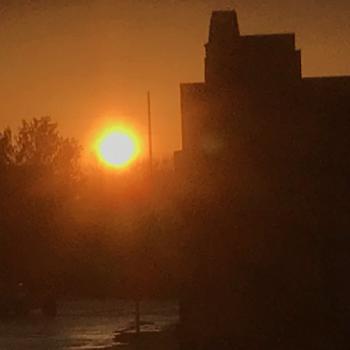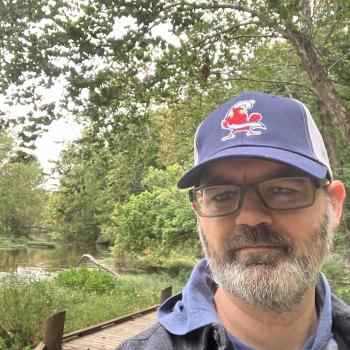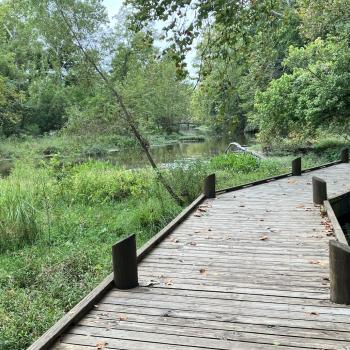Covenant and temple stories are closely related in ancient Near East (aNE) literature. You would have to master several aNE languages to develop a fuller understanding of the societal worth of temples or covenants/treaties
I. Here’s the plan…
This article sets up a series 3 part series, in retrospect. I won’t be looking at the Seers, Early Prophets, Major Prophets, The Twelve, etc.
I’m focusing on another strand of prophecy throughout the Hebrew Bible (i.e. OT), prophecies centered around some great covenants and Temples (and there are other covenants).
A. Caveat | focus on the narrative
I once had the honor of attending a gathering with the President of a local synagogue and another member. They were sharing about their faith to a mixed group of Christian believers and unbelievers. Afterwards, they fielded some questions. One had to do with how they teach and apply the Hebrew Bible.
The Synagogue President said that Christians always try to take the Scripture and apply it devotionally. The Hebrew Bible is not necessarily a book of devotions. Most of the Hebrew Bible is a collection of narratives. He added emphatically, “Let the Story speak for itself!”
So with that point of contact, I hope to provide a little hermeneutical context.
II. Are covenant and temple narratives closely related in the OT and Intertestamental Period?!
A. How would we know? Multiple choice question, and there may be other options
- We would have to work with a professor doing some directed research
- Or work with a tremendous library system
- A few of us could propose a great class with an English tutor
- One or all of the above, to gain an understanding of the question at hand
- Or a team of could start a ground swell with one or all of the above
B. Please do not expect me to explain the various components of covenant and treaty
This is a narrative, not an exploration of higher dialogues.
Some dialogues I have been invited into and others have opened up because I have kept on asking, seeking, and knocking (transliteration of our Lord’s Word in Matthew 7 & Luke 11).
I will share three covenants in this piece and their relation to the Last Days. Look for more on covenant and temple in future articles.
III. protoevangelium
And I will cause hostility between you and the woman, and between your offspring and her offspring. He will strike your head, and you will strike his heel.” (Genesis 3.15, NLT)
I won’t spend a lot of time on the Creation covenant/s because they are commonly taught.
I will point out this verse, part of the Scripture known as the protoevangelium.
The prophecy is that the serpent (Satan), “will strike His heel” (Jesus Christ the “offspring”). This shows the temporary effect of Christ’s death.
However, prophetically Jesus, “will strike your head,” pointing to the ultimate punishment and death of Satan.
Striking the heel is a temporary wound. Whereas the blow to the head is a death blow to be fulfilled in the Last Days.
This is a common Christian interpretation, whether one believes in Theistic evolution or not. The literary metaphor is often considered clear.
IV. Noahic Covenant
There are plenty of prophecies within this covenant that will remain until the Last Days: the rainbow, cursed earth changed to seasons, eating cooked meat, etc. Noah’s family is also told to be fruitful and multiply, to replenish the Earth, as the first couple had been instructed (Genesis 8-9).
A. What is the right side up rainbow with all the colors?
You do a little research. The rainbow is a sign to remind us a flood will never cover and destroy the whole Earth again.
B. Do I detect bar-b-que?
We are reconstituted as humans to eat meat without blood (i.e. cooked). People may already be eating meat before this point in history, but perhaps they are also eating it raw at times. Personally, I believe that we are no longer vegetarians in Genesis 3 because God sacrifices animals in the covenant with Adam and Eve. Then He uses their skins to make clothes for the first couple.
C. Farmer’s Almanac or the Paris Agreement, or whatever?
I don’t know.
Nonetheless, the curse of the ground after the Garden of Eden (protoevangelium passage) is changed to seasons that we can predict and use to cultivate the earth, grow crops, etc.
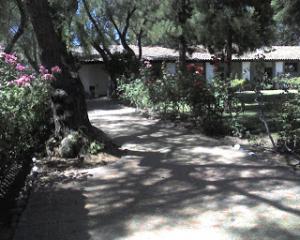
D. Are there other aspects of the Noahic Covenant?
Yes, indeed there are! In fact, some scholars believe that the ancient laws of civilizations globally have similarities because of this covenant. The impact cannot be overstated.
E. What about God’s image?
Mankind is once again confirmed as something greater than all the animals. We are made in the image of God. I know people can refer Theologically to the imago Dei, and you have to discern where they are coming from. However, within the Bible, there is a line that cannot be crossed. We are made in God’s image.
“And I will require the blood of anyone who takes another person’s life. If a wild animal kills a person, it must die. And anyone who murders a fellow human must die. If anyone takes a human life, that person’s life will also be taken by human hands. For God made human beings in his own image. (Genesis 9.5-6)
The imago Dei is stated and confirmed in the Creation account. However, in the Noahic Covenant there is an addition… something we might call capital punishment.
Part of the problem before the flood is that the people are not only living wild lives, they’re violent beyond control (from Cain’s time to Noah’s). Arguably, there are some righteous leaders as well, but if one reads the times… they seem to become worse.
F. Is it ever God’s WILL to murder?
I capitalize God’s WILL only as a play on words for those who choose only to focus on the Protestant Reformation.
Wait, you can’t choose.
So why ask the question?
Moving forward… there are times when perhaps by the hand of Providence, God raises up nations for war; to bring justice and ultimately peace back to regions of the world. However, God never sanctions murder, the digression into intentional brutality that Noah becomes a witness to in the times he faces.
Humans are not brute beasts. The imago Dei is to be preserved and prized, even revered, because we mysteriously reflect our Creator.
Sure, we are meant to carry the imago Dei, but we all may have a marred image. This is not an uncommon concept. In fact, the marred image could be on a parallel track with original guilt or original sin. God’s image can be regenerated in us through Jesus Christ our Lord.
Nevertheless, the imago Dei is to be protected forever!
V. Abrahamic Covenant
A. For those who do not know the story…
Abram and Sarai are chosen by God to move from Ur to Canaan, a land promised to them and future generations, the promised land.
Hypothetically, they could be from an aNE people group who are tent-dwellers, but not necessarily gypsies. They move and trade easily with both goods and livestock as merchants/shepherds. The Hurrians travel up and around the Fertile Crescent near to the east of Turkey (Kuwait, up and around, to all points west). They could have the name Hur-rians from ancient Ur (Hur-|Ur; I’m not an expert in ancient Near East etymology by any stretch of the imagination). There’s a possibility they traveled to India, maybe even Greece, where the Philistines could have come from to raid Israel.
If Abram and Sarai are Hurrians, or traveling with them, perhaps Abram’s dad Terah sensed some type of missionary call to take a trip to Turkey. The community they developed there is up near the northern borders of Iraq and Iran.
These merchants/shepherds may be a mercenary/warrior class as well, amassing wealth and horses along their travels. Do you remember the story of a war between kings of all types of territories? King after king is listed in campaigns near the Dead Sea. Some of Abraham’s extended family are captured as POWs (Abram’s name is changed by now, possibly because he is walking in favor).
B. What did Abraham’s clan do?
He only had 318 warriors. They took down the kings who thought they had won, and brought his extended family home. You’re going to find the narrative in Genesis 14, and also one possible name for Abraham’s mercenaries/warriors.
They could be the Hurrians who originate in Ur (Ur or Hur-rians). Scripture refers to them a couple times as the Horites (Genesis 14; Deuteronomy 2 and in the Genesis genealogies). These names for this people group could be related in the times.
The Hurrian religion has some similar ideas about God and creation. In fact, a lot of very, very ancient religions do. All of us can probably thank Noah’s family for that. His covenant is thought to have been established near Turkey as well. So it may be easy to see why Abram and Sarai are open to the voice of God, and able to obey and move quickly.
VI.c Abrahamic Covenant renewed
A. We are now in the third generation (thus the c)
Abraham’s heir is Isaac. Isaac’s heir becomes Jacob. God escorts Jacob away from the clan and eventually changes his name to Yi’srael (transliteration), passing along the full covenant of Abraham to Jacob’s family.
There is far more to the Abrahamic Covenant.c, but let’s look at three key points:
Your descendants will be as numerous as the dust of the earth! They will spread out in all directions—to the west and the east, to the north and the south. And all the families of the earth will be blessed through you and your descendants. What’s more, I am with you, and I will protect you wherever you go. One day I will bring you back to this land. I will not leave you until I have finished giving you everything I have promised you.” (Genesis 28.14-15)
First of all, the same promise/prophecy is passed along from Abraham to Isaac, and now to Jacob. God will multiply His people until they are innumerable.
Second, all the families of the earth will be blessed. This is a forever promise about the renewal that will come through these people, a new people of God. Families means the greater clan or tribe. Family could also refer to a nation or people group. Through the line of Abraham, which leads to Jesus Christ, all nations can be touched.
Third, God promises to bring Jacob back home, and to fulfill His specific promises to Jacob.
B. These words are not to be taken lightly
Not everyone knows what it’s like to leave your homeland. We can argue about whether or not this detour in Jacob’s life is self-imposed…
Who cares?
As seminarians, there were some of us who learned that this one one of the highly regarded patriarchs by Hasidic Rabbis.
I strongly dislike it when we always read our Western World context back into Scripture.
There’s a greater Abrahamic theme with this Scripture I’ve chosen.
VII. Does everybody know the fulfillment of this narrative when Esau forgives Yi’srael?
How do the Hurrians launch a campaign? They have horses, I imagine something like scimitars, bows and quivers, and who knows what else?
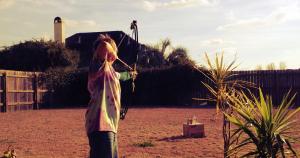
Let’s not assume we know too much about the Hurrians. Do we know enough about the languages of every people group surrounding the people of God?
Where does Esau live, with all of his horsemen?
- Mt. Seir
- Waynseville
- McDonalds
- Florida
- Ireland
- Samoa
What peoples live in Mt. Seir?
- The Deuteronomist
- The Seers | Job | Balaam | Jethro
- Horites/Hurrians or both
- Horites/Hurrians or both and Esau’s clan
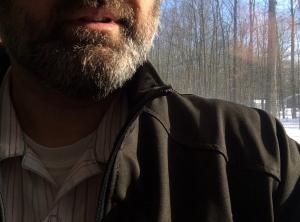
The greater Abrahamic theme, in my opinion, is not that Esau and Jacob mend their relationship. The theme, congruent with the Abraham’s promise, is that God has a home for Jacob.
In fact, God is drawing Abraham home. He’s not only using Esau, Jacob’s estranged brother to do so. God is using a people group that looks a lot like the Hurrians, the riders with Esau.
Furthermore, restoration and reconciliation, not to mention sanctuary from extended family who can keep one under protection, is another theme to consider.
God has a home for Jacob, and for us all, and He promises to lead us home as part of this covenant that blesses the world.
Sometimes I have a new thought. Sometimes the thought may be simply an addition to other dialogues. When I do have the opportunity, it is nice to be invited into dialogues like that.




